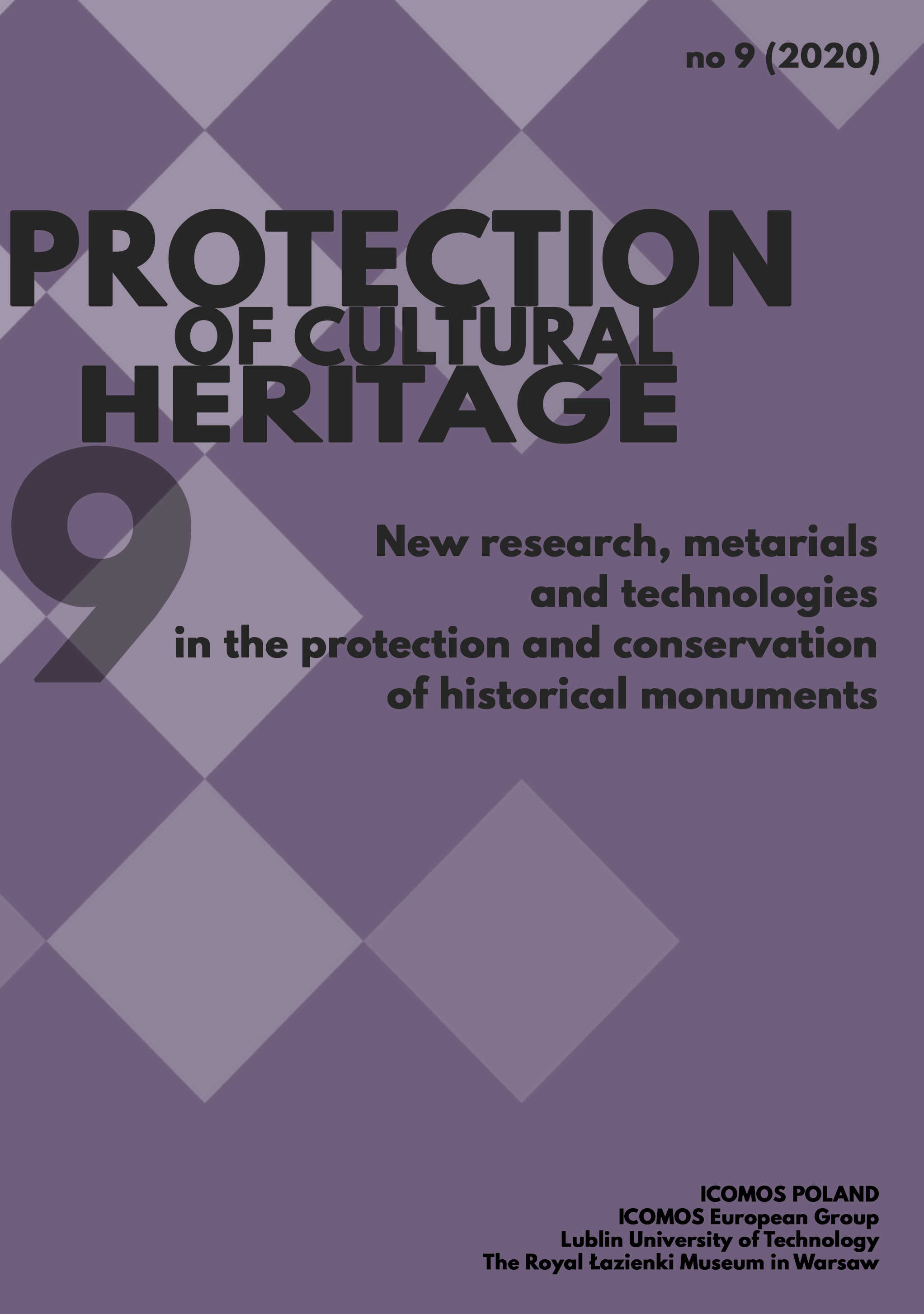Bogucka T., (7.09.2001) Państwowe czy społeczne, Gazeta Wyborcza.
Chhabra D., (2015) Sustainable Marketing of Cultural and Heritage Tourism, London/New York, Routledge.
Chun S. A., & Artigas F. (2015). Participatory Enviroment Planing Platform, [w:] Emerging Issues, Challanges, and Oportunieties in Urban E-Planing, s. 46-68, Hershey: IGI Global.
Duchowski A.T., (2017) Eye Tracking Methodology: Theory and Practice, Springer.
"Fatamorgana" czy ciekawa realizacja? Kontrowersje wokół Biblioteki Archidiecezjalnej na Ostrowie Tumskim, Gazeta Wyborcza, (3.05.2016), http://wroclaw.wyborcza.pl/wroclaw/1,35771,20071236,fatamorgana-czy-ciekawa-realizacja-kontrowersje-wokol-biblioteki.html, dostęp 05.12.2019.
Filipowicz P., (2010), Rola zaleceń konserwatorskich w procesie inwestycyjnym realizowanym w obiekcie zabytkowym w świetle oczekiwań projektanta i inwestora, [w:] Kurier Konserwatorski, s. 6-10.
French Y., (2011), Marketing and Public Relations for Museums, Galleries, Cultural and Heritage Attractions, Londyn, Routelege.
Gołaszewska M., (1984), Zarys estetyki. Problematyka, metody, teorie, Warszawa: Państwowe Wydawnictwo Naukowe.
Gombrich E., (1979) The Sense of Order. a Study in the Psychology of Decorative Art. Oxford: Phaidon.
Grabowska M., Pancewicz Ł., Sagan I., (2015), The Impact of Information and Comunication Technology on the Rise of Urban Social Moovements in Poland, [w:] Emerging Issues, Challanges, and Oportunieties in Urban E-Planing. (s. 93-113): Hershey: IGI Global.
Grabowska M., Szczawiel T., (2001), Budowanie demokracji, Warszawa, PWN.
Holmqvist K., Noström M., Anderson R., Delvurst R, Jarodzka H., van de Weijer J., (2011), Eyetracking. Acomprehansive guide to methods and measures. Oxford: Oxford University Press.
Ingarden R., (1970), Czego nie wiemy o wartościach, [w:] Studia z estetyki, T. 3, s. 220-257.
Kłosek-Kozłowska D., (2017), Ochrona wartości kulturowych miast a urbanistyka, (148): Warszawa: Politechnika Warszawska.
Lubocka-Hoffmann M., (2000), Retrowersja - konserwatorska metoda odbudowy miasta historycznego, [w:] Problemy zarządzania dziedzictwem kulturowym, (s. 192-209): Warszawa: Politechnika Warszawska.
Mager T., (2015), Architecture RePerformed. The Polithics of Reconstruction, London/New York: Routledge.
Murzyn M., (2014), Subiektywizm i obiektywizm aksjologiczny podstawą rozdzielenia zadań w systemie ochrony zabytków i zarządzaniu dziedzictwem kulturowym, [w:] Wartość funkcji w obiektach zabytkowych, (s. 195-204): Warszawa: PKICOMOS/Pałac w Wilanowie.
Parowicz I., (2018), Cultural Heritage Marketing: A Relationship Marketing Approach to Conservation Services, Palgrave Pivot.
Rusnak M., Fikus W., Szewczyk J., (2018), Jak obserwatorzy postrzegają głębię we wnętrzu gotyckiej katedry wraz ze zmianą jej proporcji? Sondaż okulograficzny, Architectus, 1(53), s. 77-88. DOI:10.5277/arc18010.
Rusnak M., Ramus E., (2019),With an eye tracker at the Warsaw Rising Museum: valorization of historical interiors, [w:] Journal of Heritage Cnservation., 59, s. 78-90, DOI:10.17425/WK58WARSAW.
Rusnak M., Szewczyk J. (2018), Eye trackers in evaluation of transformation of historical monuments. Revitalisation of the Dresden arsenal, [w:] E3S Web of Conferences49,00093, DOI.org/10.1051/e3sconf/20184900092.
Rusnak M., Szewczyk J., (2018), Eye tracker as an innovative conservation tool. Ideas for expanding rang of reserch related to architectural and Urban heritage, [w:] Journal of Heritage Conservation; 54, s. 25–35, DOI:10.17425/WK54EYETRACK
Soluch P., Tarnowski A., (2013), O metodologii badań eyetrackingowych, [w:] Lingwistyka stosowana, 7, s. 115-134.
Stawasz D., Sikora-Fernandez D., (2016), Koncepcja smart city na tle procesów i uwarunkowań rozwoju współczesnych miast. (29): Łódź: Uniwersytet Łódzki.
Tarkowska E., Tarkowski J., (1994), Amoralny familiom, czyli o dezintegracji społecznej w Polsce lat osiemdziesiątych, [w:] Socjologia świata polityki, T. I. Władza i społeczeństwo w systemie autorytarnym, (s. 263-281) Warszawa: ISP PAN.
Uchwała NR XIIT/442/99 Rady Miejskiej Wrocławia dnia 21 października 1999 roku w sprawie uchwalenia miejscowego planu zagospodarowania przestrzennego obszaru – Ostrów Tumski, wyspy i Ogród Botaniczny we Wrocławiu.







